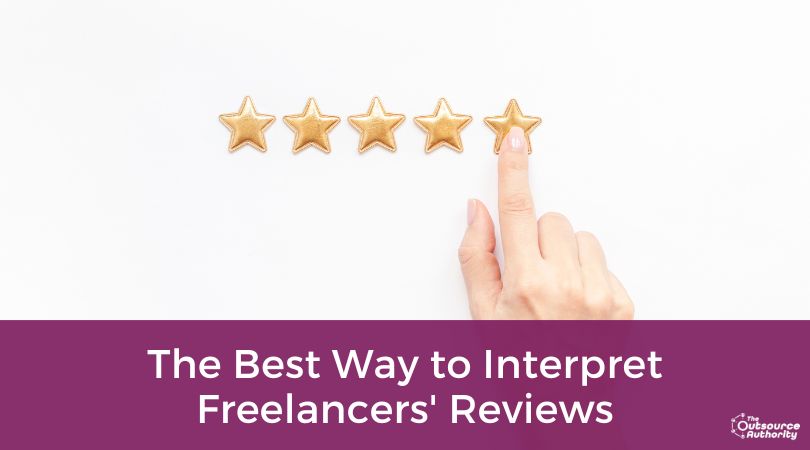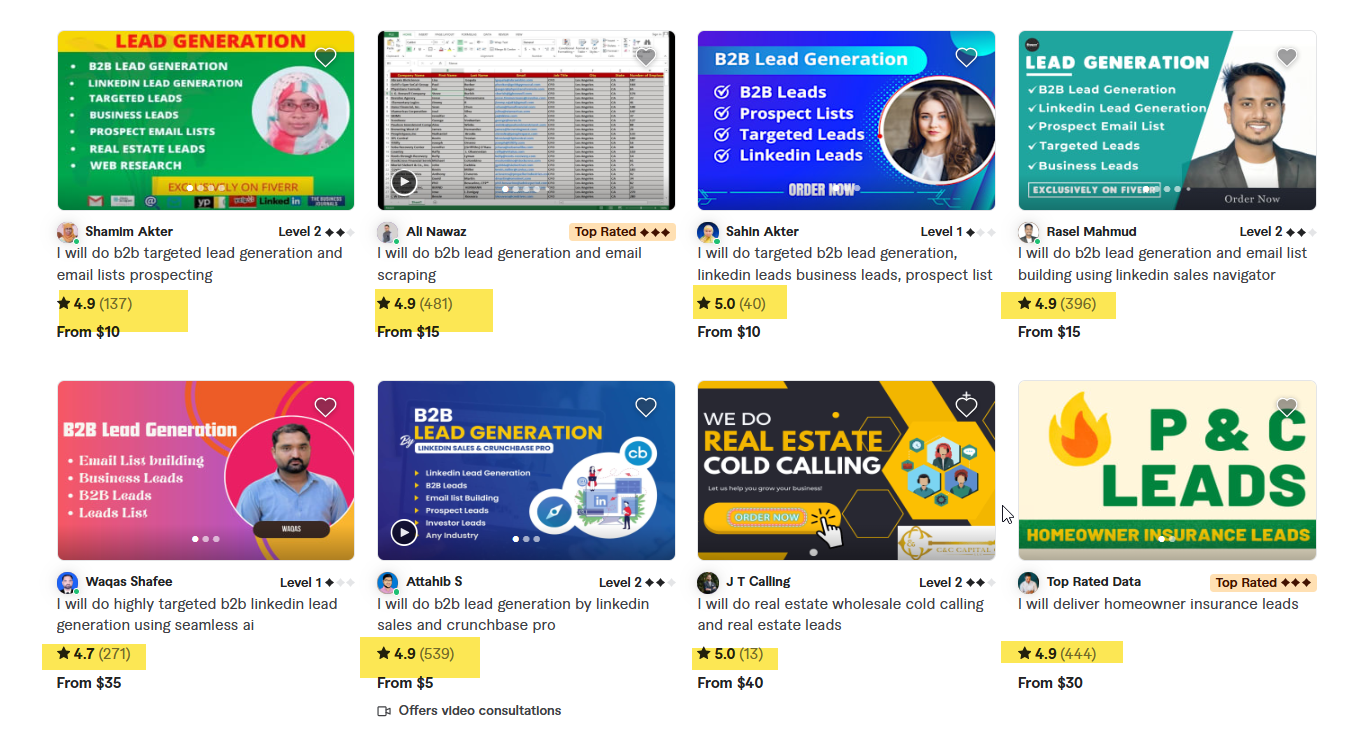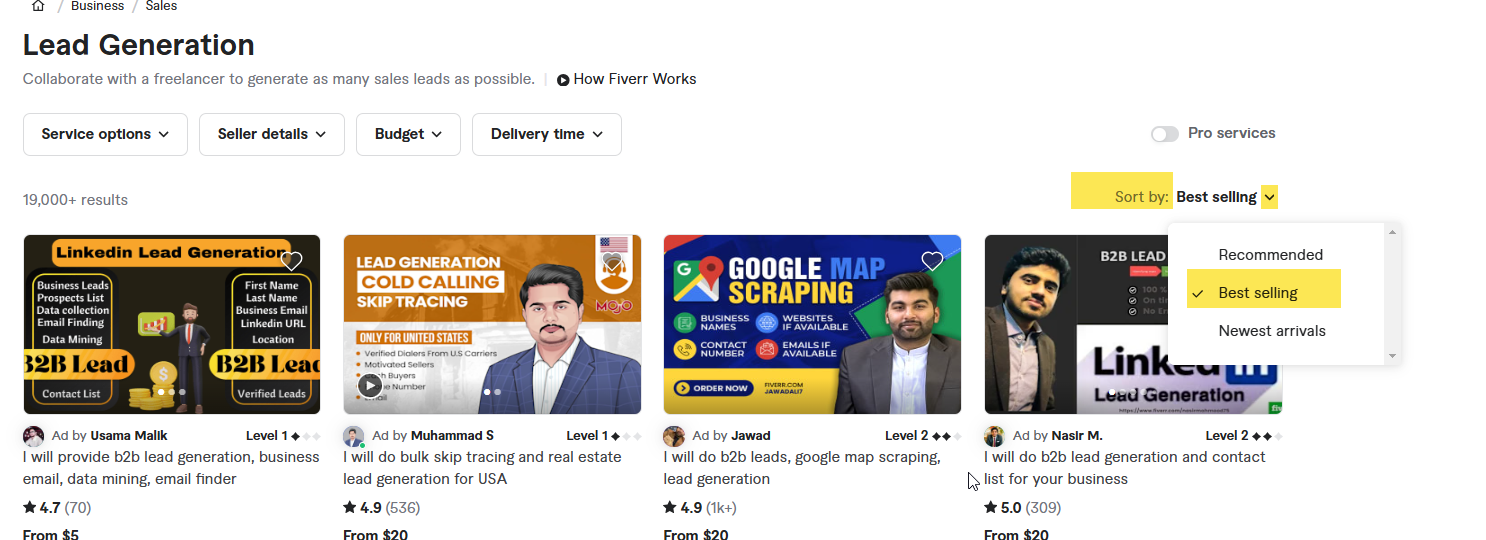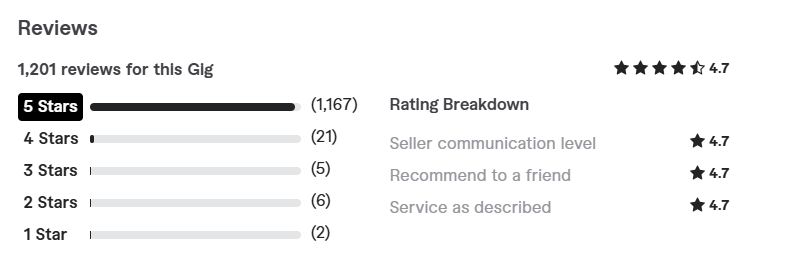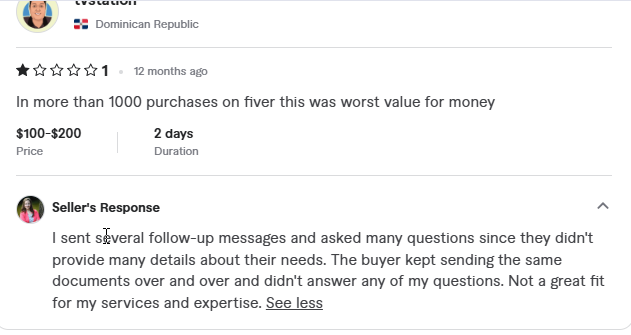Understanding Freelance
Ratings Beyond the Stars
When hiring a freelancer, checking reviews seems like common sense. But what if I told you that star ratings alone don’t always tell the full story?
We’re using Fiverr as an example in this guide, but the same principles apply across platforms like Upwork, Freelancer, and PeoplePerHour. While each platform has its own rating system, the key takeaway is the same: you need more than just a star count to choose the right freelancer.
A 5.0 rating doesn’t automatically make one freelancer better than another with a 4.9. Many buyers assume a small drop in rating means lower quality, but that’s not always the case. A 4.9 might just mean a handful of buyers gave 4 stars, even if they were still happy with the work.
Here’s some perspective:
- A freelancer with 1,000 total reviews and a 98% 5-star rating would have about 20 ratings that are less than 5 stars.
- A freelancer with 50 total reviews and a 98% 5-star rating would have just one review below 5 stars.
- The more reviews a seller has, the less impact each individual review has on their overall rating. A single 4-star review could drop a freelancer with 50 total reviews down to 4.9, while the same review would barely move the needle for someone with 1,000+ reviews.
That said, you may want to start with the highest-rated freelancers and see how many results come up in your search. If you’re not finding the right fit, consider 4.9-rated sellers as well, applying the same vetting process. And if you still need more options, you can look at 4.8-rated sellers, always checking reviews for any red flags.
By the end of this article, you’ll know how to properly evaluate freelancer ratings and reviews so you can hire with confidence.
How Fiverr’s Rating System Works
Fiverr uses a 1-5 star rating system, but it’s not a simple average, it’s weighted based on multiple factors.
There are two main types of ratings:
- Gig Rating – Each gig has its own rating, based on the reviews from buyers for that specific service.
- Overall Seller Rating – This is an average across all gigs a freelancer offers, meaning a seller with multiple services may have different ratings on each gig.
Fiverr doesn’t round up ratings (although they used to have a different system). Even a handful of 4 to 4.5 star reviews can bring a seller’s rating down from 5.0 to 4.8.
For example:
- If a freelancer consistently receives 4-star and 5-star ratings, their average might land around 4.3, even if the work was solid.
- A freelancer with 500+ reviews at 4.8 has likely maintained consistent quality over time, whereas a freelancer with 10 reviews at 5.0 may still be untested in certain areas.
Filtering for the Best Freelancers
Fiverr’s sorting options can be misleading if you don’t know what to look for. The “Best Selling” filter doesn’t mean highest rated, and now ads appear at the top of search results, so the first listings aren’t always the best options.
To narrow down quality freelancers:
- Start with Top Rated Sellers first – These freelancers have a proven track record, but on occasion, there may not be enough to choose from to find the best match.
- If no matches, consider Level 2 sellers – These are experienced freelancers, but since there are thousands, you’ll need to be more selective.
With Level 2 freelancers, the same vetting process applies—ratings, reviews, and seller responses are key to finding the right fit.
How to Analyze Review Breakdowns
Fiverr’s rating system goes beyond just a single star count. Each gig has three rating categories that give a deeper look into the freelancer’s performance:
- Communication – How well the seller responds and works with clients.
- Service as described – Whether the final product matched the gig description.
- Would recommend – Overall satisfaction and likelihood of hiring again.
A freelancer with a high rating might still have weak scores in key areas, which is why checking the breakdown is crucial.
When analyzing reviews, compare 5-star vs. 1-star reviews:
- Do negative reviews mention the same issue repeatedly (e.g., missed deadlines, low quality, lack of communication)?
- Are complaints about actual performance or buyer misunderstandings (e.g., expecting extra work for free)?
Looking only at top reviews can be misleading since Fiverr prioritizes them, often showing older or more favorable feedback first. Scanning mid-range and low-star reviews provides a clearer picture of potential risks.
Seller Responses: A Hidden Goldmine
A freelancer’s response to bad reviews can tell you just as much as the review itself. A well-handled response shows professionalism, while a defensive or rude reply can be a major red flag.
Red flags to watch for:
- Sellers arguing with buyers – If they get aggressive, dismissive, or blame the buyer, that’s a bad sign.
- Multiple “failed to deliver on time” complaints – If late deliveries are a pattern, expect delays.
Green flags that show professionalism:
- Courteous, professional replies – A seller who stays calm and respectful, even when receiving criticism, is likely easy to work with.
- Offering a fix or clarifying the situation – If a freelancer takes accountability or explains a misunderstanding, it shows they care about customer satisfaction.
Checking seller responses helps you determine if negative reviews reflect the freelancer’s true quality or just a difficult client.
When to Consider a 4.8 (or Lower) Rating
Many buyers assume anything below a 5.0 is a red flag, but that’s not always the case. In fact, a 4.8-star freelancer with 1,000+ reviews might be more reliable than a 5.0 seller with just 10 reviews.
More reviews mean a freelancer has been tested by a wider range of buyers, making their rating a more accurate reflection of their work.
When a 4.7 or 4.8 is worth considering:
- If negative reviews are old or appear to be from unreasonable buyers.
- If they have strong seller responses that demonstrate professionalism.
When to avoid a freelancer:
- Frequent complaints about quality or dishonesty in recent reviews.
- A pattern of missed deadlines or lack of communication.
Freelancer ratings on Fiverr aren’t as straightforward as they seem. A high rating is a good starting point, but context matters just as much as the number.
- A 5.0 isn’t always better—review patterns, seller responses, and the number of total reviews provide a clearer picture.
- Filters and sorting can be misleading—ads and “Best Selling” gigs don’t always reflect quality.
- Seller responses to negative reviews tell you a lot—a professional reply is a green flag, while defensive behavior is a warning sign.
- Final tip: If you’re unsure, message the seller before ordering to gauge their communication and professionalism.
With the right approach, you’ll know how to interpret Fiverr reviews accurately and find the best freelancer for your needs. To get the best experience when working with freelancers, get the tips in “Outsource with Confidence – what I Learned from Buying Over 1,000 Gigs on Fiverr. Download the free guide here.

